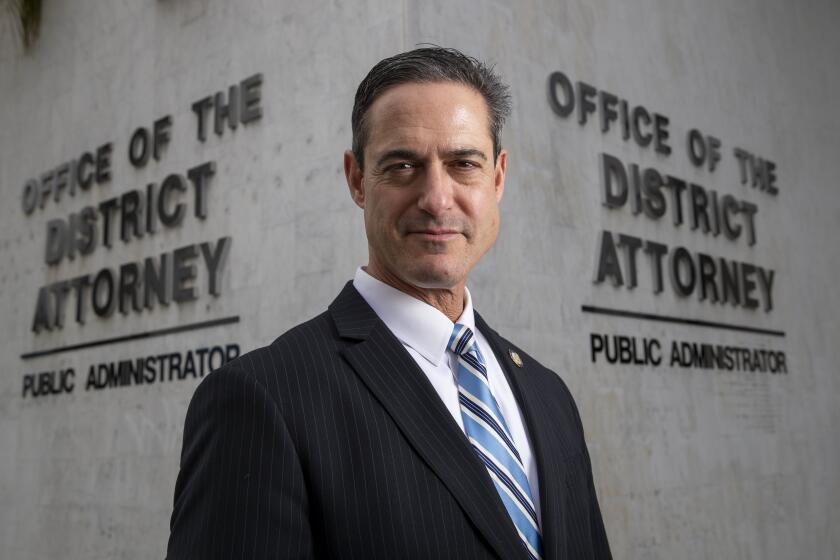Sewage spill reporting protocols clarified
- Share via
Tariq Malik
HUNTINGTON BEACH -- While the Orange County Grand Jury continues its
investigation into allegations that the city failed to properly report
massive sewer leaks beneath the Downtown area, city officials have been
hard at work revamping procedures for reporting such spills.
Assistant City Administrator Bill Workman said that over the last few
weeks, new measures have been put in place to ensure that sewage spills
can be accurately tracked, contained and cleaned.
“We’re scheduled to begin additional training for our crews this week
to arm them with the most updated knowledge in sewage leak control,”
Workman said. “Our Fire Department has always been on target in being
able to respond and report surface spills ... but for subsurface spills,
there’s been some concern over what [leaks] were and weren’t being
reported.”
Between Jan. 4 and Monday, the grand jury heard testimony from six
city employees, including City Administrator Ray Silver, Public Works
Director Robert Beardsley, Don Noble, the city’s maintenance manager, and
Jerry Dilks, a crew leader in the Public Works Department, to provide
information about the sewer breaks. The result of those testimonies is
undetermined, officials in the Orange County district attorney’s office
said Monday.
At issue are massive breaks in sewer lines running beneath Downtown
and Old Town Huntington Beach. The leaks were first spotted in 1996
during video camera surveys of the sewer system, and have since been
repaired by the city.
Officials at the California Regional Water Quality Control Board’s
Santa Ana office said they were not notified about the breaks four years
ago, and issued an order last month that the city find and clean any
remaining sewage, as well as present a plan on how to track bacteria, if
any, in the residue by Feb. 7.
Mark Adelson, an environmental specialist and chief of surveillance
and enforcement at the water board’s Santa Ana office, said he has
briefed the city on what the state agency’s expectations are concerning
leaky sewers.
“We’ve basically boiled it down to the five Cs: contain, control,
communicate, cleanup and calculate,” he said.
The first action in a sewer break is to contain the spilled sewage,
then work crews must control the source, Adelson said. A city should then
communicate with all various organizations and oversight agencies, like
the water board, with an interest in the sewer spill.
Finally, it is necessary for the city to clean and decontaminate any
areas affected by the spill, and calculate how much volume was not
contained through the city’s actions.
Water officials said the only statutory law requiring the reporting of
sewer leaks applies to spills of more than 1,000 gallons, though there is
an administrative law prohibiting any type of surface discharging. Also,
they added, all spills must be reported to the area’s local health
officer.
City officials have disputed the water board’s claim that more than
70,000 gallons of raw sewage a day spilled into the ground, stating there
is no true way to verify that number.
The city discussed the sewer leaks and reporting with the Orange
County Health Agency in August 1996, and again in 1999 as part of coastal
water pollution investigation meetings.
Workman said that most of the new reporting protocols put in place
deal with documenting the chain of command and accountability work crews
and leaders should go through to report future sewer breaks.
They also include additional training on how to fix broken waste water
pipes to preserve the health and safety of the public, while not
compromising that of the worker.
All the latest on Orange County from Orange County.
Get our free TimesOC newsletter.
You may occasionally receive promotional content from the Daily Pilot.









